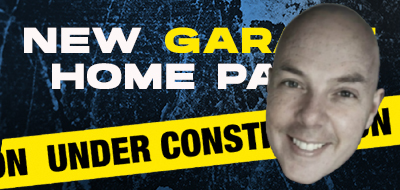
Part one of this series on Christmas Eve covered what has been happening on Traxsource with garage music during 2021. In this concluding part today, I draw on my personal experiences of making music to explain what I think needs to happen next for garage to become more successful on the website during 2022…
I spent a fair amount of the last article pointing out the importance of getting involved with vocal songs. I believe this is part of an overall strategy which could help garage reach new heights during 2022. The genre has been doing well on the underground for years and its influences are seen in the pop charts frequently. So why shouldn’t the real garage scene get a slice of this lucrative pie?
The first thing I believe needs to happen is producers should spend more time working on original vocal songs. There’s nothing wrong with the occasional cover, especially if done well – but rehashing old material only gets you so far. Create new and interesting music and then get really good at promoting it. It’s going to require a big effort to do this – especially from a scene which has its divides – but it’s necessary for things to advance further.
This was one thing I found terribly disillusioning when I was making music. I believed that my collaborations with the likes of Morris Revy and Richelle Hicks were strong, original music – but the ecosystem meant they ended up going nowhere. It’s disheartening and one of the reasons why I stopped making music. If this doesn’t change, more people are going to leave too.
The second point kind of relates to this. Garage is a broad category of music – ranging from the deeper stuff by Demarkus Lewis all the way to 2-step. I think it’s time to embrace garage for the broad church that it really is. In the early days of dance music, no one cared what genre anything was in – if it was good music, it was good music and it got played. Garage DJs and producers must embrace this mentality and go with it.
The third thing is to involve other, more established labels and genres. Probably the biggest producer on Traxsource at the moment is DJ Spen – and to be fair, he’s one of the better ones on the site for endorsing new talent. Garage house producers have started appearing on his Quantize label – True2Life appeared on a release recently, and Scott Diaz has been on a few in the past.
Spen has stayed on top all these years because he’s able to see what way the wind is blowing. And if garage makes enough noise, he’s going to find it extremely hard to ignore it. The offers of remix work will inevitably follow, as might even signing a few records from the genre.
You see, it’s all about cross pollination. This is something which the pop industry embraced years ago – it’s why you see collaborations between a new face like Dua Lipa and an old face like Elton John in the charts. Instead of continuously fighting these things, garage needs to give it a go and see what happens. It could be very successful.
Finally, keep as many of the rights to your own music as you physically can. The artists who made the earliest house records are still having their records played to this day – but most make no money at all from this. Why? Because they signed the rights away decades ago for a large cash advance. In an age where the pie isn’t as large as it used to be, owning more of your own music ensures more money heads in your direction.
In summary – make original music, do remixes if you think you can add something new to a song, promote the hell out of each other’s work, and don’t be afraid to back yourself. And I can tell you now that this blog will be there to support you along the way…
In case you missed it, Part 1 of this series was published on Christmas Eve and can be found here.
